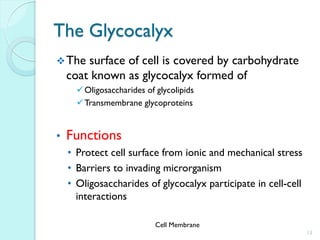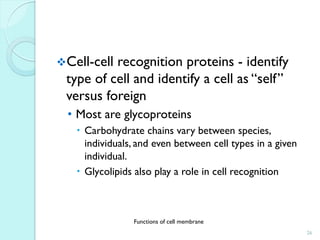The cell membrane is composed of a bilayer of lipids and embedded proteins. The lipid bilayer provides structural organization with phospholipids as the major component. Proteins constitute 25-75% of the membrane mass and carry out specific functions. The membrane is selectively permeable due to transport proteins that regulate the passage of molecules. Transport proteins include channel proteins that form pores and carrier proteins that selectively bind molecules. In addition to transport, membrane proteins are involved in cell recognition, cell adhesion, and cell signaling.



























